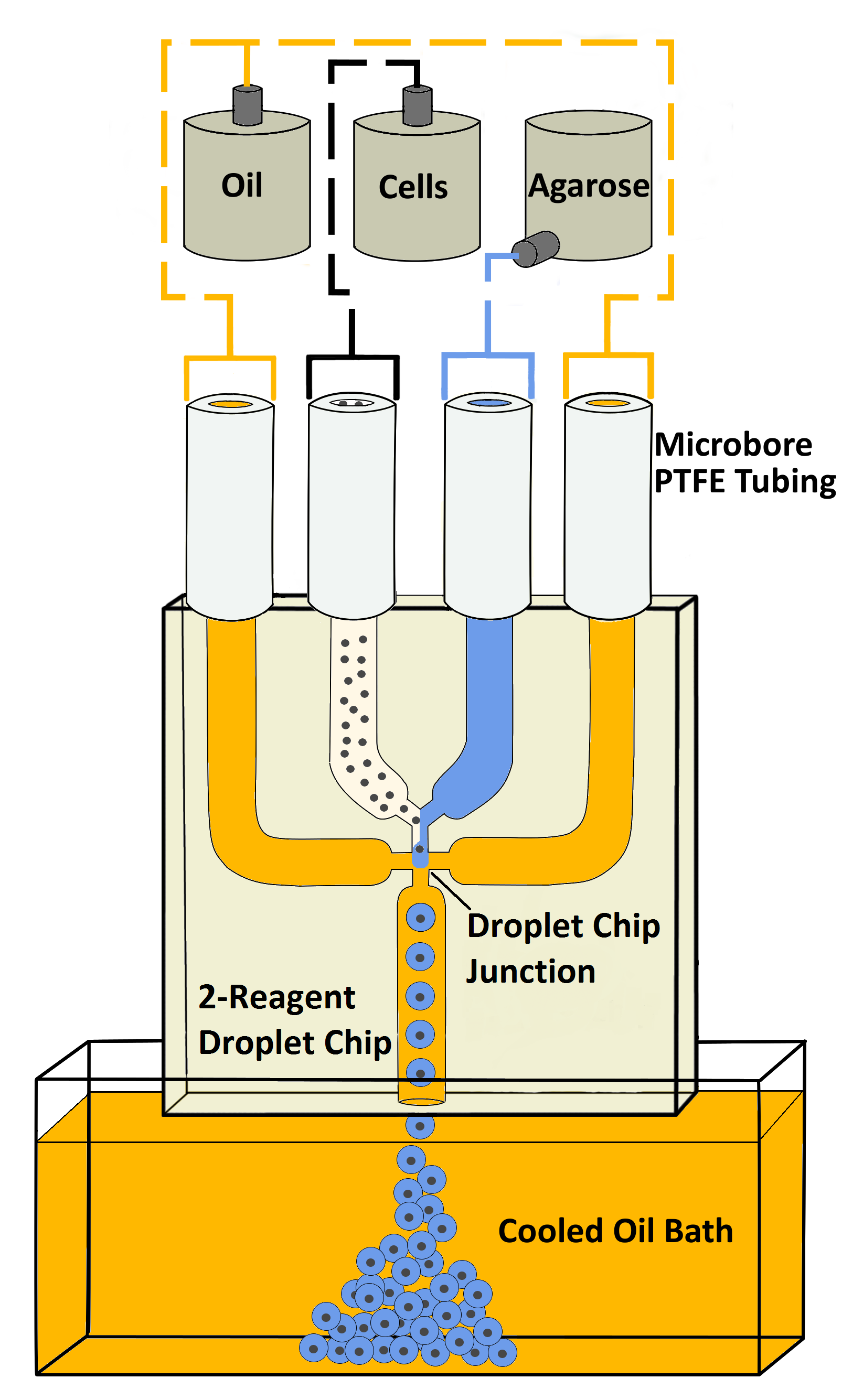Methods
Summary
Using equipment manufactured by Dolomite Microfluidics we have been able to capture plant protoplasts in hydrogel microbeads of agarose. Aqueous microdroplets can be formed in oil flow using microdroplet chips. Using the same technique of droplet microfluidics we plan to capture our cells in a stronger material that they cannot burst through easily during growth. In addition, a hydrogel blend like chitosan-gelatin-agarose can be further strengthened by cross-linking the chitosan or raising the pH. This will yield a dynamic system that allows us to influence the mechanical strength of our microbeads with living cells already inside them.
Challenges
One challenge in searching for a strong material that can resist cell outgrowth has been finding one that can both be made into microbeads and is also biocompatible. Limiting the extent that the hydrogels used disrupt cell growth in ways that are not mechanical will be a specific concern for the project.
Pre Analysis Plan
Ideally, we will be able to interpret how cells respond to being captured in tough hydrogel microbeads by time-lapse imaging a single cell for its entire life in the microbead. Doing this we can compare the growth of cells that have been captured in microbeads of differing mechanical properties.
Protocols
Browse the protocols that are part of the experimental methods.
